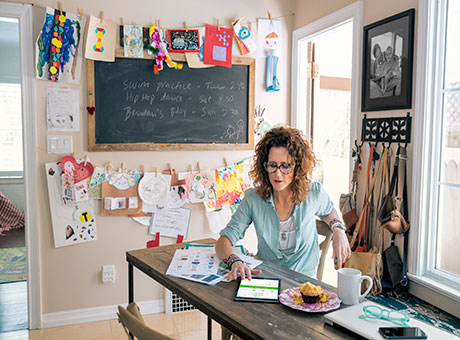It’s no secret that selling art can be a challenge, even for the most talented artists. To keep from starving, it’s important that you take steps to turn your passion into a viable source of income. Turning art or crafts into a business can be daunting at first, but you just need to approach it in steps. With a little persistence, eventually you may be able to turn your next masterpiece into your next rent check. Here’s our step-by-step guide to selling art.

How to Start a Business Selling Your Own Artwork
Putting Your Art Online
If you want people to buy your art, you need to make it available. These days, the easiest way to accomplish that is by taking some high-quality photos and making yourself a website. Once you have a solid website, you can start networking online and in person. You can use an e-commerce platform such as Shopify, BigCommerce, or Big Cartel, or you can make a more traditional website and handle transactions privately.
Putting Your Art Into the World
After creating your website, you can use that site to attempt to gain entry into art shows and galleries. Start off small. Look into local art galleries, coffee shops, music venues, restaurants, and other businesses that may be interested in displaying your art. Put a small sign with your phone number and a price near each piece, and then wait. If nothing else, having your art out in the world adds legitimacy to your passion, and it gives you exposure.
Sell Art Commissions
Many artists prefer to follow their own path, but sometimes you need to make sacrifices to pay the bills. Offering art commissions is an excellent way to generate some income. Make sure your clients know exactly what to expect so you don’t have to worry about disappointing them. Show them multiple examples of artwork you’ve already created, and only accept jobs that you know you can handle.
Deciding what to charge for commissions can be tough. You don’t want to undervalue your services, but charging too much can drive potential clients away. What you charge for your art determines what it’s worth to the buyer. If you believe that your art is worth a certain figure, that’s what you should charge. You may end up negotiating, but at least the buyer will have a rough market value for the piece.
Hire a Professional Consultant
If you’re not confident in your ability to value your art, approach people about it, create it, or anything else, you can talk to an art consultant or agent. You may be able to gain valuable insight by paying for a few hours of their time, or you may find that paying a representative a percentage of each piece sold is worth it to you. Talking to the right person can also open doors if that person believes in your work.
Networking
In the art world, some of the most successful artists are just those who know how to network best. Networking isn’t just about being social; you need to be able to discuss your artistic vision, describe your artwork in detail, and generally sell yourself as an artist. At first, art networking can be intimidating, but it gets easier as you do it more frequently. Be confident in yourself and your art. Be genuine, share your passion organically, and the rest will follow.
Build a Client Base
If you’re just getting started turning your art into a business, your client base is probably minimal. In these early stages, you may want to offer art commissions or even personal pieces at a discounted rate in exchange for advertisement. Even if that simply means requesting that the customer gives you a referral if it comes up, it’s a step in the right direction.
Know Your Audience
If you create graffiti-inspired street art, you might not appeal to the fine art crowd. To market your art more effectively, you need to figure out where you and your work fit in. Talk to other art lovers, and ask how they would classify your work. When people give feedback, pay attention. The better you know your own art, the better you can sell it. Like any industry, you need to identify your target demographics and market to them.
Use Social Media
Once you’ve identified your target market, consider marketing yourself through social media outlets. Sometimes all it takes is the right hashtag to get your name out there. You can also pay for sponsored ads on social media pages. Many advertisement outlets such as Facebook let you hone in on your target audience, which can give you amazing exposure in all the right places.
Be Prepared to Sell
You never know when you might have an opportunity to make a sale. While you can sell your art at flea markets or craft fairs , opportunities sometimes happen out of nowhere. Keep a few business cards on hand with your website address, and don’t be afraid to bring your art up in conversation. As an artist, you can use your passion to meet some fascinating people — many of whom may become customers.
Want to learn more about starting a business in Canada? Read our handy guide to starting a business in 15 steps. This article guides you through the 15 steps to start a business, along with a downloadable checklist you can fill out to go from idea to launch to success.


